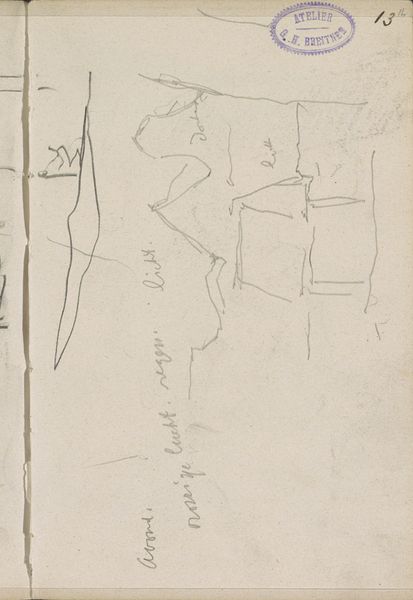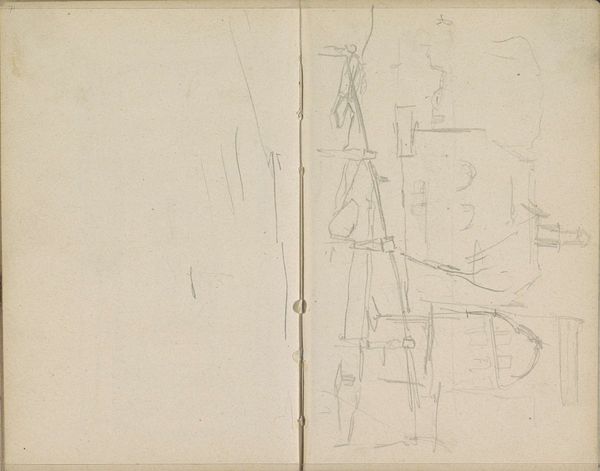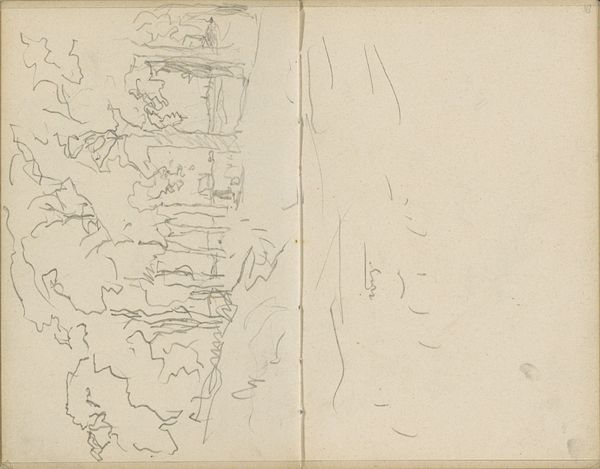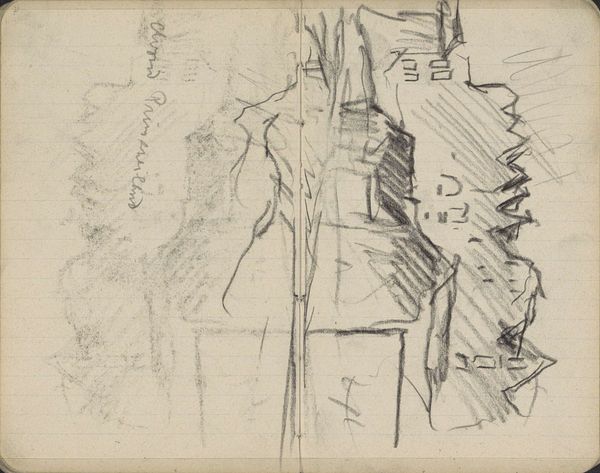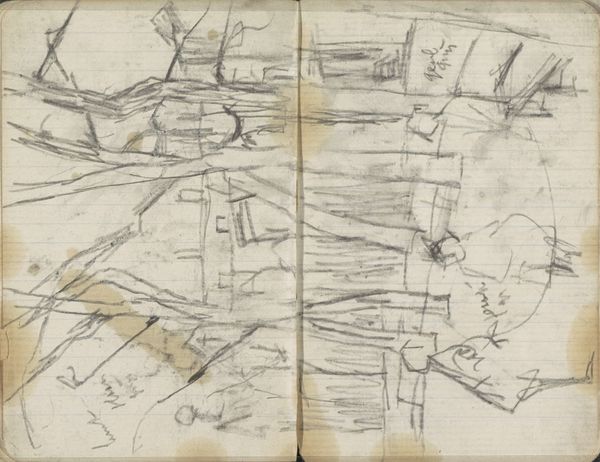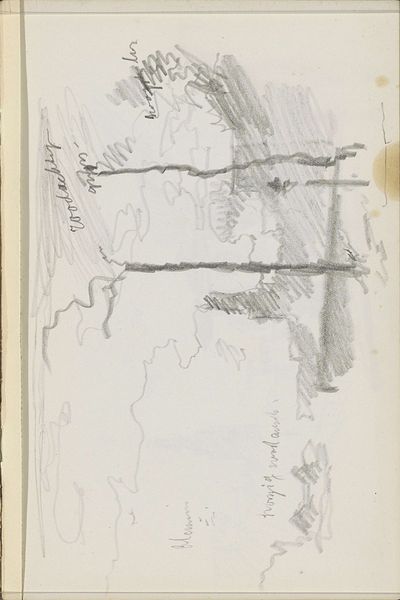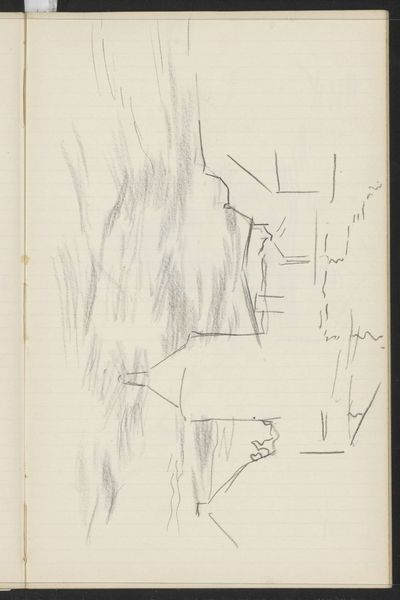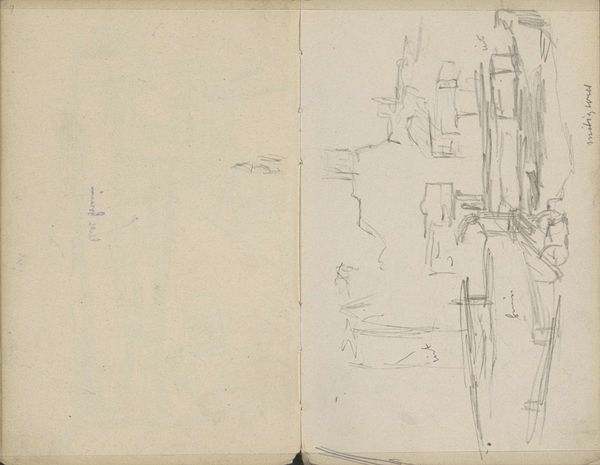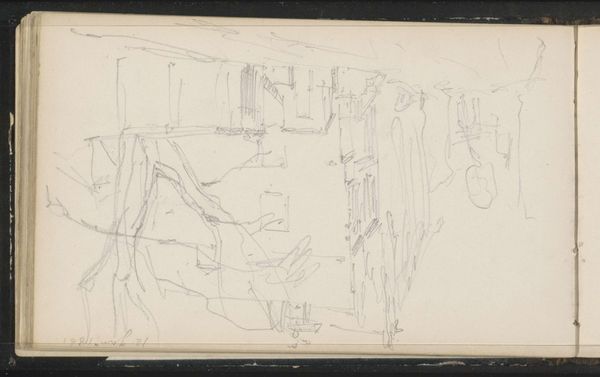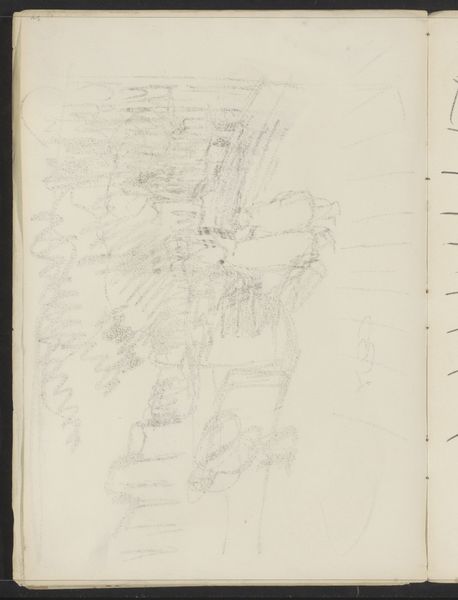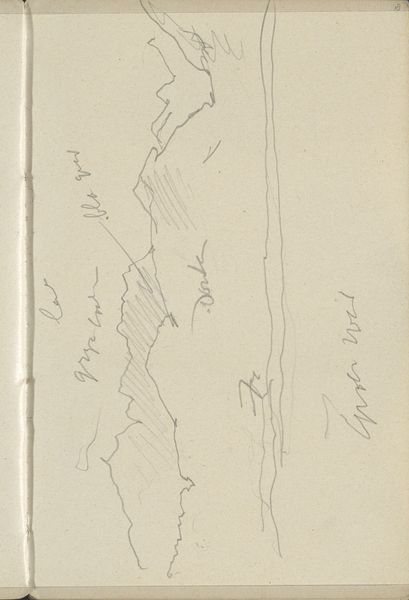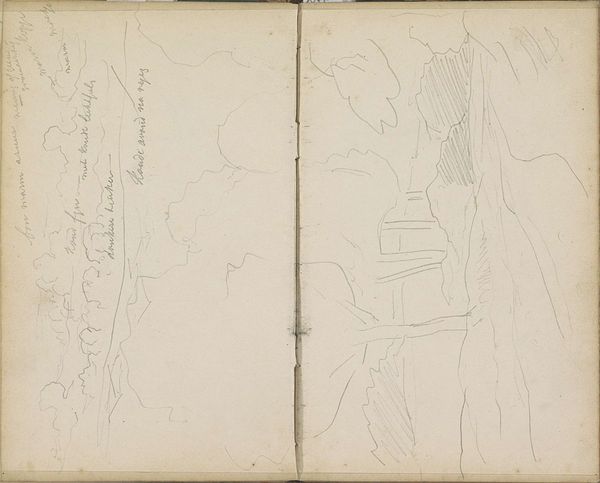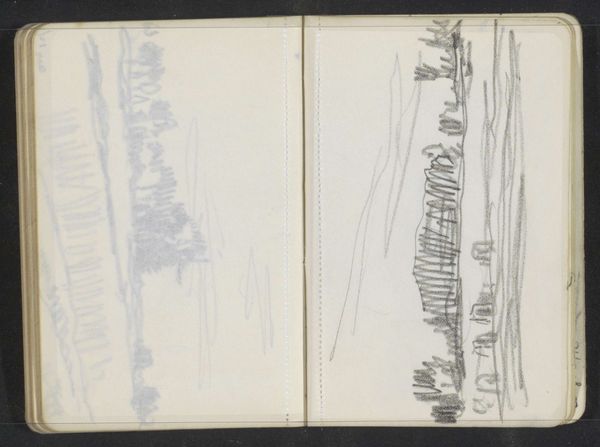
Copyright: Rijks Museum: Open Domain
Curator: Here we have George Hendrik Breitner’s “Stadsgezicht,” or “Cityscape,” created around 1915 or 1916. The work, held here at the Rijksmuseum, is rendered in pencil and ink, presenting an intimate glimpse into the artist’s urban observations. Editor: There’s something compelling about its immediacy. The sketch feels like a fleeting thought captured on paper, all rapid lines and suggested forms. Curator: Precisely. Note the economy of line. Breitner eschews detail for essence. The structural elements – the rooftops, the implied perspective – are all conveyed with an almost calligraphic simplicity. Editor: It feels deeply rooted in the act of seeing and recording. One can almost feel the artist's hand moving quickly across the page. This medium suggests a portable practice—a tool of observation that connects Breitner to his surroundings. Was this page taken from a sketchbook, perhaps? Curator: Quite possibly. Its inherent incompleteness invites us, as viewers, to complete the picture. Semiotically, the unstated carries as much weight as the depicted. Editor: Indeed. The open sketchbook format reminds us that we're looking at a moment within a broader, lived process of creation, which involved specific tools: the pencil, the ink, the very book itself. Each with its own history and industrial context. How readily accessible were these materials? And how might those limitations, or abundance, have shaped Breitner’s artistic decisions? Curator: A fascinating perspective. I am intrigued by how the use of negative space contributes to a sense of depth. Editor: Perhaps it speaks of the ephemeral nature of urban experience itself. What we fix, what escapes us... I wonder if there's something inherently 'working class' about the format? The sketchbook, pen, pencil— accessible materials that record fleeting impressions quickly and personally. Curator: A notion well worth considering. Breitner's impressionistic approach softens any hard lines and almost creates an effect that speaks of a kind of pre-photography or the way one might describe “memory”. Editor: Looking at the physical object and thinking of all the ways art making takes place, I am left wondering whether what we are seeing here reflects only a moment or a wider, perhaps a social phenomenon where simple materials facilitated recording and re-processing reality through an artistic lens. Curator: Indeed. A brief glimpse into the urban landscape of Breitner’s time which allows a rich interpretation through both art and process.
Comments
No comments
Be the first to comment and join the conversation on the ultimate creative platform.
